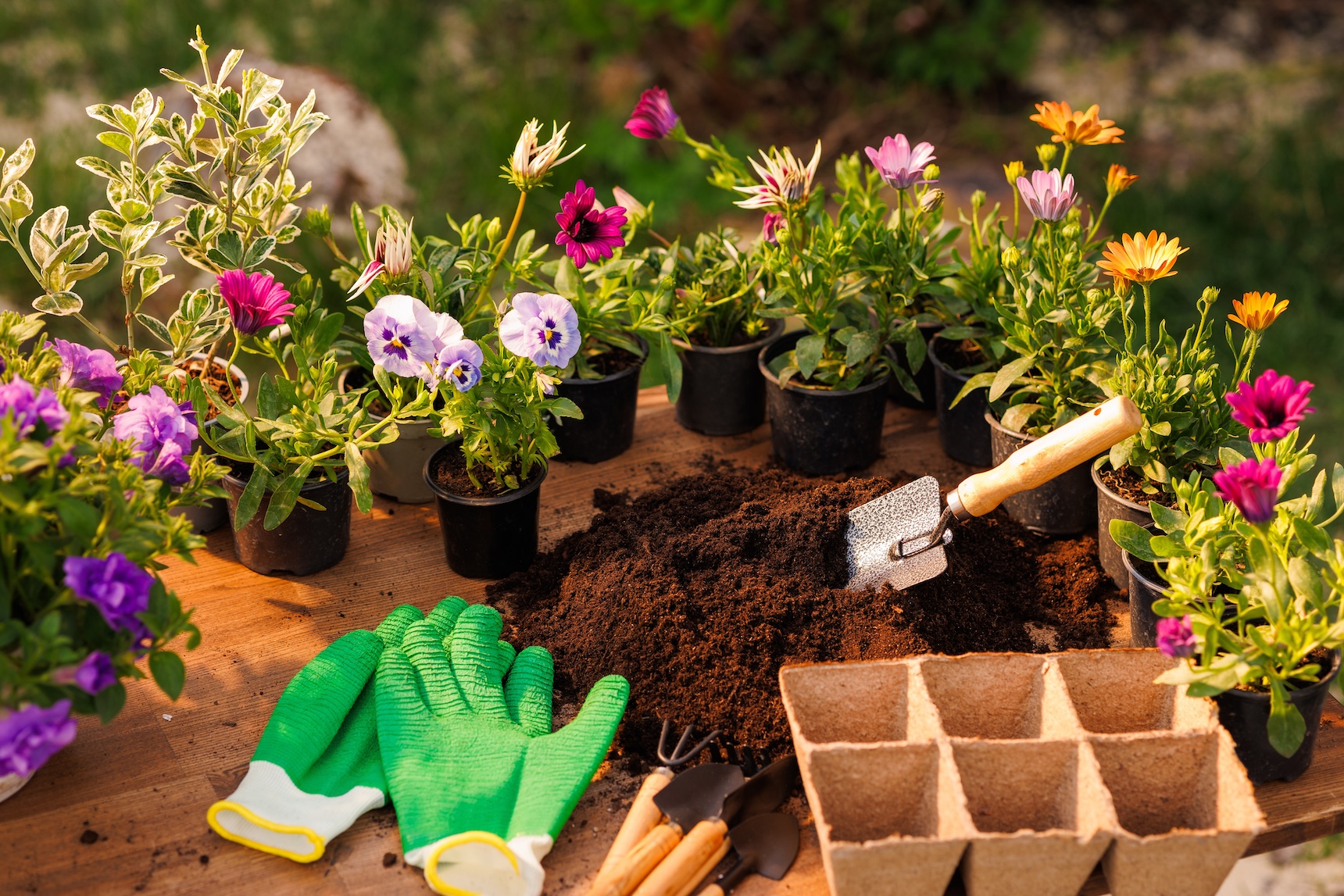Text to speech audio articles made possible by CAST11 Talking Glass Media
This week, Ken Lain, The Mountain Gardener of Prescott, shares how to go from being a newbie to an Arizona gardening pro. Learn how to prepare a garden for the first time, the best time to plant in Prescott, how to protect your plants from Arizona heat, and more!

Understanding Arizona’s Garden Zones and Frost Dates
Arizona is vast, and its climate varies significantly. Here in Prescott, we are located in USDA Plant Hardiness Zone 8a, with winter lows typically ranging from 10°F to 15°F. This is crucial for selecting plants that will thrive in our cold nights.
Knowing your frost dates is just as important. In Prescott, our average last spring frost is around May 6, and the average first fall frost is about October 29. This provides a growing season of approximately 176 days. It means you can plant tender annuals and vegetables the first week in May without worry, and you’ll want to harvest or protect them by November.
Watering Practices That Work Locally
Watering in Arizona is not like gardening back east. We are dry, and efficient watering saves plants and money.
Deep and Infrequent: The goal is to encourage deep root growth. Light, frequent irrigation leads to shallow roots, making plants more susceptible to heat stress. Water deeply, allowing the water to penetrate at least 18 inches for shrubs and perennials, and even deeper for trees. Then, let the soil dry out somewhat between waterings. How dry? Stick your finger in the soil. If it feels dry down to your second knuckle, it’s time to water.
Timing is Everything: Water in the early morning. This reduces evaporation, allows the water to soak in before the midday heat, and gives plant foliage time to dry, which helps prevent fungal diseases. Avoid watering in the evening, as wet foliage overnight can lead to problems.
Drip Irrigation is Your Friend: For most permanent landscape plants, drip irrigation or soaker hoses are far more efficient than sprinklers. They deliver water directly to the root zone, minimizing waste. For larger gardens, consider a smart irrigation controller that adjusts watering based on weather conditions and soil moisture levels.
Soil Preparation for Local Conditions
Our native Prescott soils are often a mix of decomposed granite or heavy clay, both of which need improvement.
Amending the Soil: Before planting anything, especially new garden beds, amend your soil generously. Watters Premium Mulch is a fantastic locally sourced option. It is a finely ground composted forest product. Work a 2-3 inch layer into the top 6-8 inches of your native soil. This improves drainage in clay soils and helps sandy soils retain moisture and nutrients.
Mulch, Mulch, Mulch: After planting, apply a 2-3 inch layer of Watters Premium Mulch on top of the soil around your plants. Mulch is a miracle worker in Arizona. It conserves moisture, suppresses weeds, regulates soil temperature, and slowly breaks down, adding organic matter to the soil. Keep mulch a few inches away from plant stems and tree trunks to prevent rot from occurring.
Easy Peasy Plants for Prescott Landscapes
Starting with the right plants sets you up for success. Here are some of my top recommendations for low-maintenance, high-impact plants that thrive in Prescott.
For Sun-Drenched Spots:
Lavender: The ‘Munstead’ or ‘Provence’ varieties are hardy, fragrant, and drought-tolerant once established.
Yarrow, Achillea, ‘Moonshine’ or ‘Terra Cotta’ offer long-lasting blooms and a tough disposition.
Sedum (Stonecrop) Offers Many varieties, ranging from groundcovers to upright forms, that provide texture and fall color with minimal water requirements.
Gaillardia (Blanket Flower)- Native to the Southwest, these cheerful flowers bloom throughout the summer and attract pollinators.
Salvias: There’s a salvia for every garden, from ‘May Night’ with its indigo spikes to the larger ‘Mystic Spires Blue’. They love our sun and dry conditions.
Ornamental Grasses: Feather reed grass, maiden grass, and blue fescue add movement and year-round interest.
For Shady to Part-Shade Areas (especially afternoon shade):
Hostas: While not as common in hot, dry climates, certain varieties can thrive with consistent moisture and protection from intense afternoon sun.
Heuchera (Coral Bells): Offers fantastic foliage color and delicate flowers, thriving in shadier, well-drained spots.
Ferns: The autumn fern or “Dryopteris erythrosora” tolerates drier conditions than other ferns, perfect for that dark corner of the yard.
Columbine (Aquilegia): Delicate, unique flowers that enjoy some afternoon shade and regular water.
Trees and Shrubs for Structure:
Arizona Cypress: A native evergreen that tolerates drought and cold.
Juniper: Many varieties, from spreading groundcovers to upright trees, offer excellent evergreen texture.
Manzanita: A beautiful native with striking red bark and delicate flowers, perfect for dry landscapes.
Rosemary: Can be grown as an evergreen shrub, offers fragrant foliage, and is extremely drought-tolerant.
Starting your Arizona garden adventure with these basics will put you on the path to becoming a true garden pro. It is about understanding our local environment and working with it, not against it. Happy gardening!
Free Garden Classes Every Saturday at Watters Garden Center
 Join us every Saturday morning at 9:30 AM for our free garden classes, right here at Watters Garden Center on Iron Springs Road in Prescott. August is packed with valuable insights to help your garden thrive!
Join us every Saturday morning at 9:30 AM for our free garden classes, right here at Watters Garden Center on Iron Springs Road in Prescott. August is packed with valuable insights to help your garden thrive!
August 16 @ 9:30 Hot Weather Blooms for Vibrant Prescott Gardens – We’re diving deep into growing blooming summer favorites: the elegant Crape Myrtle and the dazzling Hibiscus.
August 23 @ 9:30 From Newbie to Garden Pro in Arizona – We’ll cover everything from understanding Arizona’s garden zones and those crucial frost dates to best watering practices and soil preparation that works for our local conditions. Come learn something new and connect with fellow gardeners!
August 30 @ 9:30 Best Plants for Pollinators in Prescott – Want to transform your garden into a vibrant haven for hummingbirds and delicate butterflies? It’s easier than you think! By selecting the right plants and providing a few key elements, you can enjoy the delightful flutter and buzz of these winged wonders right in your own backyard.
Until next week, I’ll be helping gardeners become experts here at Watters Garden Center.
This article was written by Ken Lain. He can be found throughout the week at Watters Garden Center, 1815 W. Iron Springs Rd in Prescott, or contacted through his website at WattersGardenCenter.com.
Get more gardening tips from Watters Garden Center in the Mountain Gardener Column on Signals A Z.com.


Garden Wisdom Awaits: Subscribe for Expert Tips!
If you like this story, consider subscribing to Signals Updates,
Entertainment Events & News!
Show Me How

Comments are closed.